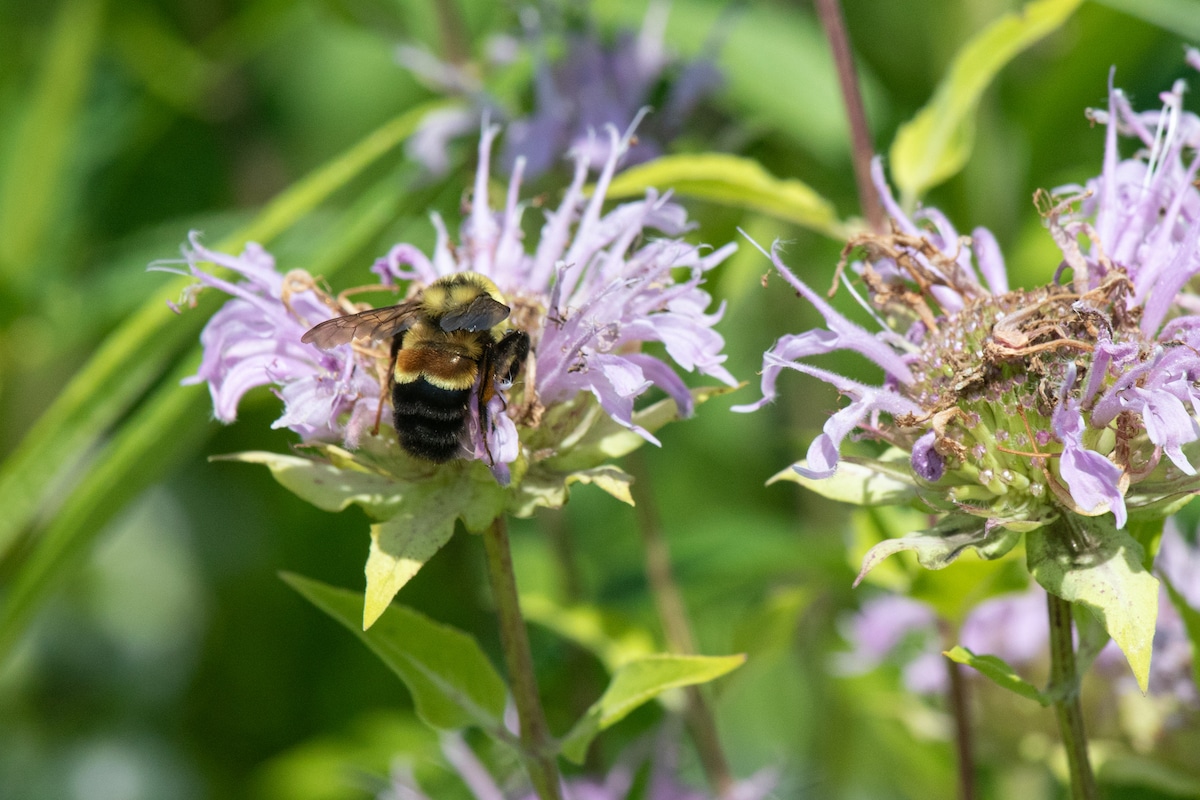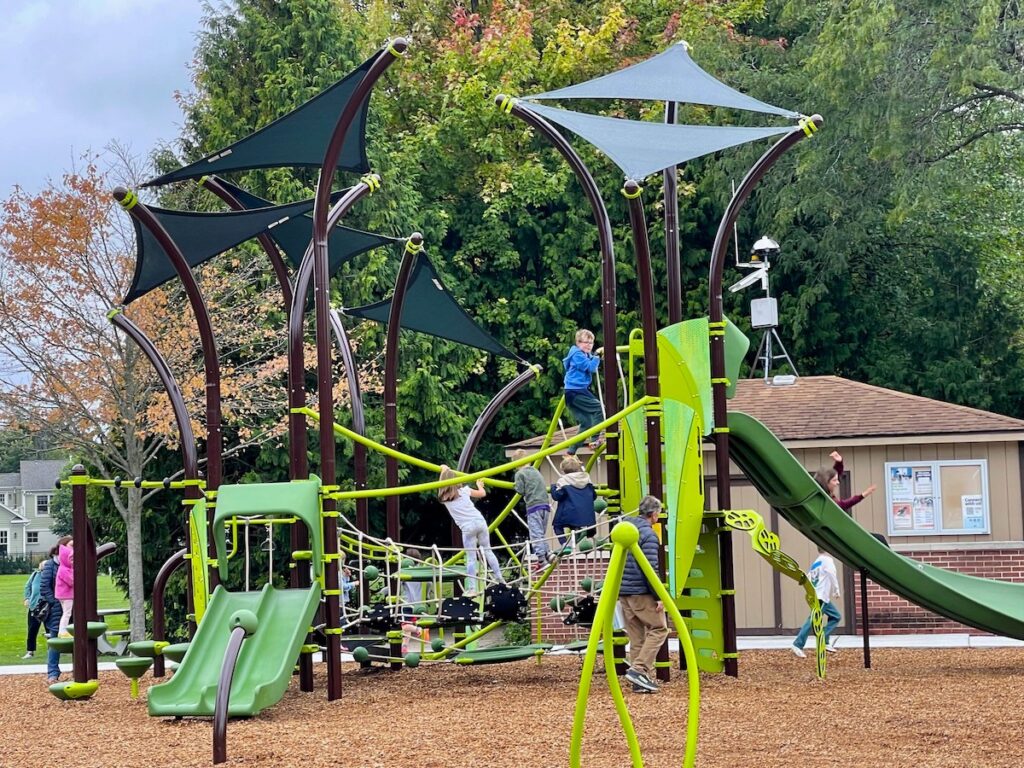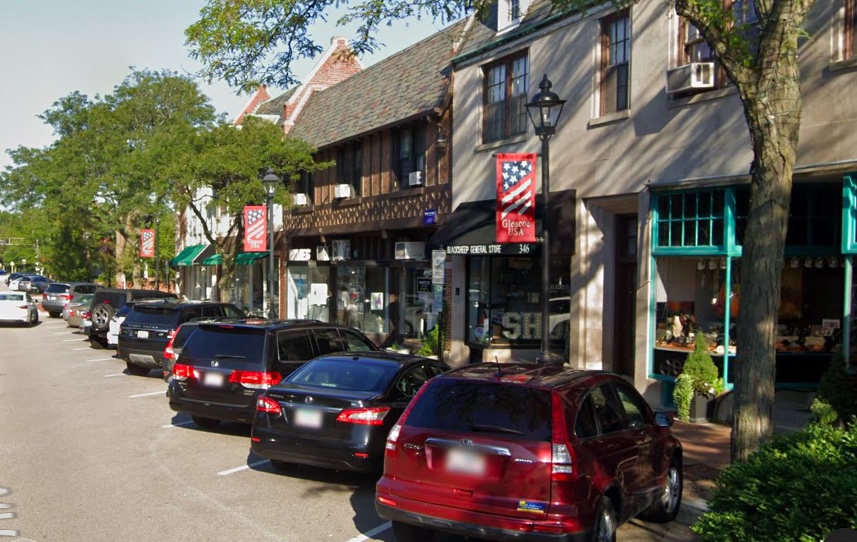
Endangered species creates buzz at Chicago Botanic Garden
The Chicago Botanic Garden last week announced a new visitor to its acres of plantings, and it comes with wings and a jaunty orange patch on its back.
The federally endangered rusty patched bumblebee (Bombus affinis) was sighted this summer foraging at the gardens for pollen and nectar, a finding that suggests that private gardens could help support populations of native pollinators.
Nick Dorian — a Synthesis Center for Conservation and Restoration fellow in the Negaunee Institute for Plant Conservation Science and Action — was in the gardens with a student in July, collecting data for a research project for home gardeners about how they can support pollinators. Suddenly, he and his student both saw the bumblebee, sporting its distinct rusty patch, like a logo on a sports jersey. Later in the session, they saw it again and began snapping photos.
Since July, researchers have seen the bees at least 10 different times in the gardens. These are female worker bees gathering food for their hives, which means that the bees are persisting in the area, Dorian explained. Since they are social species, bumblebees live in hives with a queen. Workers gather food within a mile or two of their homes. In the fall, new queens are produced in the hives, and they hibernate over the winter. In the spring, the queens emerge, feed and produce new workers. So seeing workers means that the bees have been here not only this year but last year as well.
“This means that the bees can live in a cultivated landscape, in this case the Chicago Botanic Garden,” Dorian said. “That isn’t always the case with endangered species.”
In fact, the rusty patched bumblebee appeared in the local news in 2021 and 2023 in connection with an uncultivated landscape, the Bell Bowl Prairie, an 8,000-year-old remnant habitat that was destroyed in 2023 because of an expansion of the Chicago Rockford International Airport. The bumblebee was a resident of the ancient landscape, which was among the last of the untouched prairies remaining in Illinois.
So what does it mean?
That the bumblebee can live at the Chicago Botanic Garden, which started building gardens on its site in 1965, suggests that these insects can thrive where they can find food and shelter regardless of how long it has been there.
“It means that private gardens can be important for this bee to succeed,” Dorian said.
Why care whether a single pollinator species goes extinct? “Maybe there isn’t much consequence of losing one pollinator, but what about the rest of them? When is the loss of one more species going to become a problem?” Dorian asked.
Rusty patched bumblebees used to be common in a wide swath of the Northeast and Midwest. Dorian said that they were responsible for much of the cranberry crop pollination in the upper Midwest. They are what he calls “superb” pollinators because, like other bumblebee species, they perform a foraging behavior called buzz pollination, in which they grab a flower and vibrate fiercely to shake pollen loose from where it is stowed inside the flower. Many plant species require this special technique in order to reproduce.
Beginning in the 2000s, rusty patched bumblebee populations and home range dropped dramatically in a period of 10 years, and they were listed as endangered in 2017. No one knows why their numbers dropped so fast. Climate change could be affecting the bees, but Dorian said that they can be resilient if they have the things that make their lives easier, such as access to their favorite food sources.
Dorian hopes the rusty patched bumblebee can be a flagship species like the monarch butterfly, showing that wherever there is habitat, the insect will come.
Another botanic garden scientist saw a rusty patched at the Rogers Park Metra station in Chicago in 2018. “It shows how conservation in urban areas can work. It’s a nice reminder that the role of an individual can make a difference,” Dorian said.
Giving them a hand
To help this bee in your own yard, plant its favorite native plants, such as wild bergamot (Monarda) and Joe-Pye weed. It’s good to provide nectar sources for the whole growing season, too. Queens emerge in the spring and feed on flowers like Virginia bluebell. Queens also need to build up fat reserves in the autumn, when sunflowers (Helianthus) are blooming.
Dorian suggests being aware of how much pesticide you are using on your property. These chemicals can harm insects they don’t target. He also encourages observation. You can watch pollinators in your yard, take pictures and submit them to iNaturalist. A naturalist can identify the pollinator in the photo.
The Record is a nonprofit, nonpartisan community newsroom that relies on reader support to fuel its independent local journalism.
Become a member of The Record to fund responsible news coverage for your community.
Already a member? You can make a tax-deductible donation at any time.


